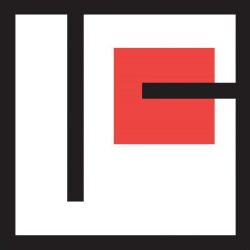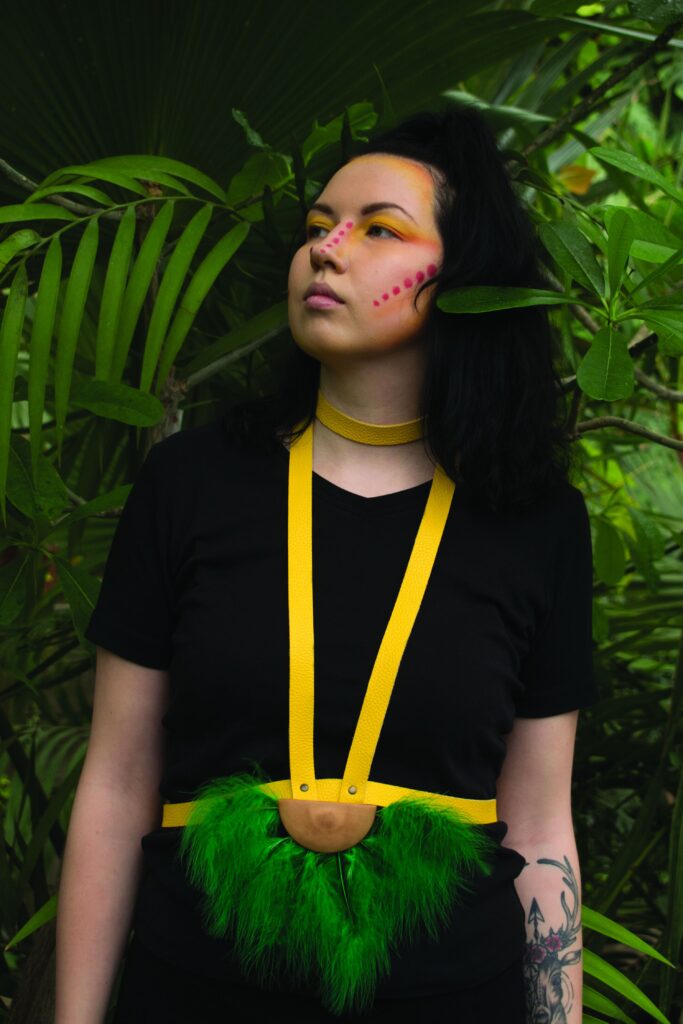Enne Huli-de kohta uurimist polnud ma varem sellisest hõimust midagi kuulnud ega näinud. Teadmine, et maailmas on igasuguseid hõime, oli mul olemas, kui iial polnud piisavalt suurt huvi, et neid uurima hakata. Tänu põhjalikule uuringule, tunnen, et tean rohkem, millised tõekspidamised ja traditsioonid on tähtsad inimestele teisel pool maakera.
Minu püstitatud eesmärk sai lahendatud, milleks oli uurimuse põhjal luua kehaehe, mis on reguleeritav vastavalt kehatüübile ning kannaks edasi sõnumit mõlemate maailma kooslusest. Kollektsioon esindab visuaalselt Huli hõimu modernsel viisil.
“Life lines” nimi sobitus valminud kollektsiooniga ning sõnum eneseväljendusest on selgesti nähtav Huli eluviiside kooslusest tänapäeva populaarsete rakmetega.
Huli hõimude kohta informatsiooni pakkuvaid allikaid oli palju, mis võimaldasid mul luua soovitud kollektsiooni. Esialgselt ei osanud ma arvata, et nende hõimude kohta võib nii palju teadmisi olla, kuid järjest rohkem uurides lisandus juurde.
Huli-de kohta õppisin seda, et nende traditsioonid on võrreldes kaasaaegsete omadega täiesti vastandlikud. Täiesti kummaline minu jaoks oli see, et naised ja mehed ei ela koos mitte kunagi ja seda, et mehed kardavad menstruatsiooni verd. Modernses maailmas oleks absurd uskuda või teha selliseid asju, sest inimeste jaoks on loomulik elada koos ühe katuse all.
Samuti arenes minu loominguline mõtlemine disaini probleemide lahendamisel. Probleemide lahenduseks oli mul alati mitmeid ideid olemas juhul, kui esialgne lahendus põrus. Kindlasti üks suurimaks probleemiks osutus reguleerimine. Inimesed on erinevate kehatüüpidega, seega pidin arvestama võimalikult paljude kohtadega ülakehal, kus kandja saaks ise paigutada ehet vastavalt enda suurusele.
Uurimuse koostamine ning kollektsiooni valmistamine avardas rohkem minu silmaringi tulevaste nahktoodete valmistamiseks. Eelnev uuring on oluline selleks, et luua järgnevad tooted. Ammutatud inspiratsioon ja enda huvi on miskit, mis tegid uuringu ja valmistamise palju lõbusamaks. Lõppude lõpuks valmis kollektsioon, mille üle saan rõõmustada ning tunda uhkust, kui palju aega ja tööd panustasin nende loomisel.
I had not heard or seen anything regarding the Huli people before doing research on them. I did know, of course, that there are many different tribes around the world, but I had never been quite as interested in researching any of them as I have been while conducting this study. Owing to thorough research, I believe that I have a better overview of the beliefs and traditions that play such an important role in the lives of people living half-way across the world.
The objective of this project was to create a body ornament which would be adjustable according to body type and which would convey the idea of a connection between two worlds, and this objective has been accomplished. This accessory line visually represents the Huli tribe through a modern lens. The name Life Lines fit the completed line well and the message of self-expression is clearly apparent in the combination of the Huli lifestyle with different styles of body harnesses popular in modern fashion.
There are many different sources providing information on the Huli tribe which helped me in creating the line I had envisioned. In the beginning, I would not have thought there to be so much information on this tribe, and the more I looked into it, the more knowledge I gained.
What I learned about the Huli people is that their traditions are almost polar-opposites of those of the more mainstream and ‘modern’ world, so to speak. The fact that women and men never live together and that men are afraid of menstrual blood was especially peculiar to me. In the world as we know it, these kinds of views would be considered bizarre, to say the least, as it is completely normal for men and women to live under the same roof. In addition, my creative thinking when solving design-related problems greatly developed as well. When the original plan failed, I already had several additional ideas that would aid me in finding a solution to the issue. One of the most difficult aspects was adjusting the harness. Since people are of varying body types, it was necessary to take into account and locate as many different points on the upper body as possible, where the wearer could adjust the accessory themselves according to their own size and needs.
Carrying out this research and creating Life Lines broadened my horizons and helped me further develop my knowledge and skills that I can definitely put to use when designing leather products in the future. The previously study conducted plays an important role in creating future products. The inspiration I drew while researching this topic and my own interest in it made the theoretical and creative process much more enjoyable. All in all, a
line was created in which I can take pride, particularly considering the amount of time and work I put into creating it.







